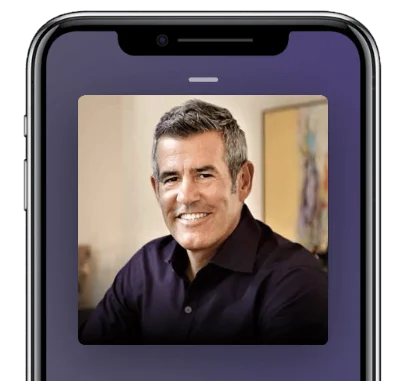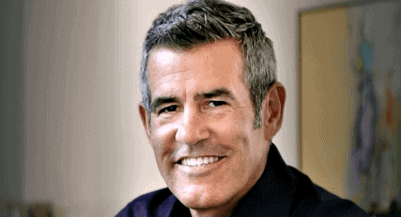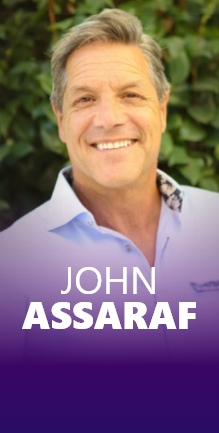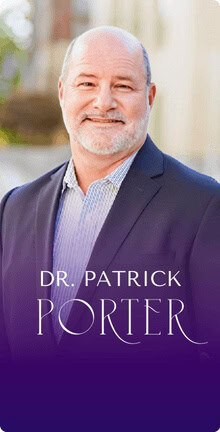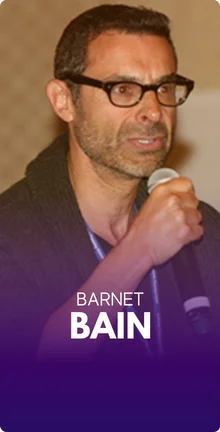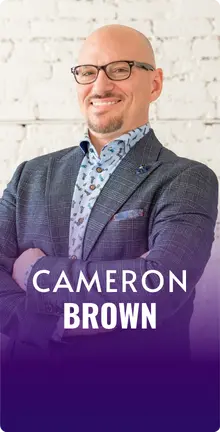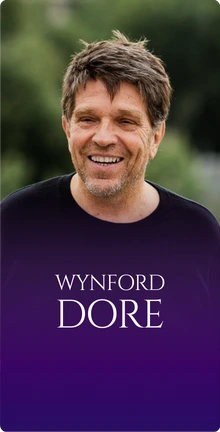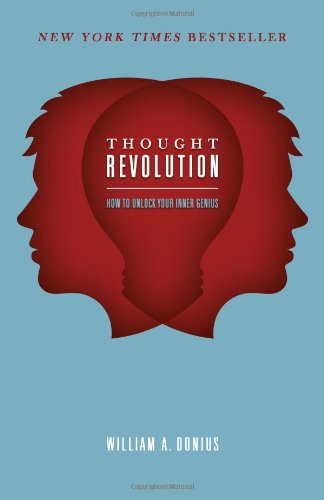
Welcome, Bill!
Thank you very much, Stephan, I really appreciate it.
So let’s dig into the right hemisphere of the brain. I had this really powerful experience with the exercise you had us do. I had the pleasure of experiencing what you present at an event called The Next Level Experience. You had us do this exercise where we had a totem animal with our regular dominant hand and then do the same exercise after you had us kind of reset our brains and do it with our non-dominant hand. I got completely different answers from the right hemisphere versus the left. I just thought that was really interesting. Then you had us do some problem solving with our non-dominant hand and we got different answers and creative solutions. It was just really amazing. Let’s just kind of talk about how you engage the right hemisphere through a writing exercise for example such as the one I just described.
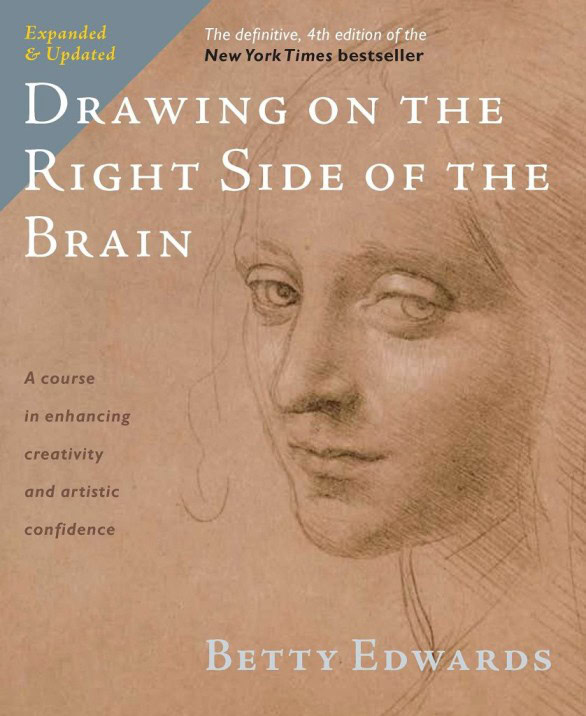
Thank you. Although it seems inconceivable, that we could in fact, in such an easy manner, cross over to a different part of our brain to get sort of a different perspective on a problem, be it a simple one or a complex one, it is, in fact, possible, and it’s a Nobel laureate, Dr. Roger Sperry, who discovered the reason why and that is to say our brains are divided between two hemispheres, the left hemisphere, and the right hemisphere. So it turns out, in his award-winning discovery, that we can, in fact, activate the neural pathway to the right side of the brain. The reason for doing so is because that is thought to be the place of creativity and artistry as well as problem-solving. Although as scientists we know that we use all of our brain all of the time, this way is a way of activating the brain in a unique kind of way. When I first learned this, 17 years ago, myself, it seemed so unorthodox and unbelievable that I didn’t really ever talk about it. So it took me those 200 interviews to see this process could work well for others as well. And when it did work for others, it really propelled me forward in thinking “Well, I really need to share this”.
And you know, write a book about it. It is not that unusual, this work has been out for 30 years already, Drawing on the Right Side of the Brain, it’s a big book artists use to help them learn how to draw. And Dr. Lucia Capacchione wrote Recovery of Your Inner Child that therapists have been using in psychology for also 30 years. So part of my insight as a business person/marketing person was “Wow, why don’t the rest of us, as everyday people, be it managers or CEOs or salespeople or clerks or whatever we are, why wouldn’t we use a tool to help us be more productive, more creative, tap into our intuition. That’s what really propelled me, in retirement, as a kind of giveback to do this work and to put this work out there. It seems strange because it is partly a writing tool. But it fails if it is just a non-dominant hand exercise because the real issue here is we have to allow ourselves to suspend disbelief and allow our thought to be reactivated through the non-dominant hand. The thought is really occurring in the right hemisphere of the brain, the opposite side of the body is controlling the non-dominant hand. So it is the right hemisphere of the brain that is activating the thought that we then subsequently capture with the non-dominant hand on the page of the paper. So it is really combined thinking and writing exercise, and that is why it is so valuable because it is literally a way to kind of think differently.

Right, so it is important to have the intention that you want to access the right hemisphere when you are doing the exercise, and not just “Oh, I want to get better at writing with my non-dominant hand”. That doesn’t really bring out the genius.
Indeed, because even though I’ve been writing with my non-dominant hand for 17 years, my handwriting hasn’t gotten that much better. So it would fail miserably if it were a handwriting exercise but succeeds because it is a thinking exercise and activating a neural pathway to that place where creativity is thought to exist. It is ultimately, the proof is in the pudding. If it doesn’t work, and you don’t get something valuable, don’t do it. It works for me, I found in the individual work that I’ve done and with these global clients that we find in teams of 20 to 200, to hundreds of people can learn how to do this simultaneously and then talk about the answers they are getting, and then come to better conclusions with problems that maybe they haven’t solved before or they haven’t solved successfully before. That is why it is so valuable because we tend to think the same way because we get ingrained in our habits and routines, even habituated in them. So we tend to think very inside the box, which is why I guess that is the most overused business axiom because it is very hard for us to do. So we get admonished to do it, but we don’t know how to do it. So we just do more of the same. That is why I think it is so valuable to learn how to do this because it can be extremely helpful in helping us to think differently and have different answers to the questions we may have struggled with for days or decades, possibly.
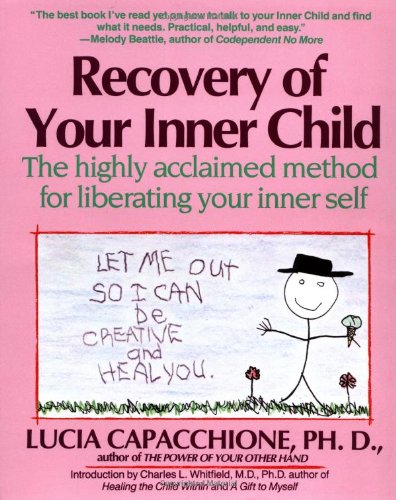
When I did the exercise, I remember that my left hemisphere, where my verbal centers are and the one that we normally access, came up with “zebra”, I believe. Those are pretty cool animals, and so forth. But it didn’t really speak to me in the same way as when I did the non-dominant hand and I got a completely different answer. I forget if it was a dolphin or a whale. And that was completely off my radar, I would have never have guessed a whale, and yet when I thought about it, I thought, “Wow, that’s pretty cool. I can resonate with that, I really can.” And so, getting these sort of problem-solving answers or outside-the-box answers from your right hemisphere – I remember when you had us do some other exercises too. It was very very cool. So one thing I remember you had us do was reset before we started writing with our left hand, and that involved squeezing the pen and so forth. Can you kind of refresh my memory on that one?
Yeah, the idea here is that the way we typically think is governed in our minds. The sort of proxy for that is the hand – most of us, 92% of Americans are right-handed. So we are using the right hand which is more directly connected to the left hemisphere of the brain, which is the linear, logical analytical part. That is sort of a proxy to conventional thinking. When we want to switch over, we do need to because it is a thinking exercise rather than a handwriting exercise, primarily. So I find it helpful, and the 17 years I’ve been doing this, to close my eyes and reset the brain, because the hardest part for many people, especially Type A’s, is to not think. Because we are always thinking. We are always wondering. We are always second-guessing. There is all this stuff. Our brains are sometimes on caffeine, and racing 100 miles an hour.
So for this to work well, we need to turn that off and reset and trust that it’s possible that an idea can come into our heads and be captured on paper without us really thinking about it in the traditional way. When I asked you that question and you answered zebra, you thought about a number of possibilities, perhaps, and wrote one down. However, when it is working effectively and we activate the right brain, we think differently, because we see it differently. It processes differently in a literal way and so it is coming from, literally, a different part of our brain. Some think it is connected to our higher consciousness. And so when that answer flows from our right brain, we have to allow it to flow forth. Sometimes people say they see it, they feel it, they hear it. If we are doing it right and we are not thinking about it, we are allowing it to flow from that point of activation – and that activation point is the non-dominant hand, if we are allowing it to flow and just responding to the question that we hear and writing down an answer, what’s really spectacular and amazing in a sense that it is even possible, is that an answer can come forth in a way such as that when we are not actively thinking about it. That’s an amazing part.
The way we typically think is governed in our minds.
That’s when the proof is in the pudding for most people. They have to kind of see it to believe it. And the way that most people describe it, the answer they get using that process is one that is actually more representationally true about the person and how they live their lives and who they are and what they are about. You alluded, Stephan, that whale was more true in a way, for who you are overall, than zebra was. It is kind of inconceivable that you can come up with an answer that is kind of better and more accurate without thinking about it in the way that we typically think about and problem solve. That is why this is potentially valuable because it is sourcing a whole different data set from a place we just haven’t been able to get to before absent that moment in the shower or driving down the country road where we get this creative thought, and we are like “Wow, where did that come from?” This may be the place where that is coming from.
Right. So I would imagine that this is a kind of part of a routine that you do this on a daily basis. You capture ideas and do problem-solving from the right side of the brain just as part of your normal rituals, right? Do you do journaling and so forth?
That’s true, and I think I would encourage your audience to consider starting with the to-do list every day. You know that standard list of things we intend to accomplish on a certain day. And I found many executives that are non-believers are quick believers when they write out their to-do list in a traditional way and they think about it, they come up with their list. They use this process and then all of a sudden they have a list that is different and they may have some important items that were generating and activated by the right half of the brain that they just didn’t think 30 seconds before. Ideally, every day what if our to-do list was informed by that other half of our brain? That more creative, more intuitive, that half of the brain that is considered to be better at problem-solving? So what if we could have one to-do list that is merged and we say “Okay, now this is – I’m going to prioritize what I’ve got here, because these are the most important things.”
I would encourage the audience to consider starting with the to-do list every day.
Yeah, that is interesting. I never really thought about doing right-brain thinking applying to my to-do list. I’m left brain with that. I use Steven Covey’s 4 Quadrants – urgent & important, not urgent but important, not urgent & not important, and urgent & not important. I try to focus as much as possible first on the urgent & important stuff and I just think if I were to utilize my right brain for this kind of planning of my day, I would get much more impactful things happening beyond just the putting out fires and building the next block to whatever structure I’m creating.
Yeah, I think that’s right. And the good part is that I’m a big advocate of that type of thinking that Covey advocates. The great part is, I don’t think this is in lieu of, but in addition to. And this can be basically a 60-second addition once you are experienced at it. But you really want to be able to capture things each day or week or month or three to five-year planning cycle, certainly. Those thoughts that might otherwise be illusive or more difficult to get at, because a lot of times those are the most valuable ones because we typically don’t think of those in our routine, habituated way that we typically crave familiarity and resist change. It is no wonder those thoughts are harder to get to because they are not as popular and we want to stay in our comfort zone. And some of these may not involve things outside of our comfort zone, even. Nevertheless, they are very important to consider.
Right, so what exactly is the process. Because I’ve been told by productivity experts to write down on a regular sheet of paper with a pen the top 3 things that I want to accomplish for the day and to do that each day, even though I have a to-do list manager application, I use Things for the Mac and also the iPhone and iPad. That is by Culture Code. And I love the software, it applies the GTD, getting things done, methodology from David Allen and allows me to apply context to each of my next actions and so forth. But again I think it is very left-brain thinking and I’d like to incorporate my right brain into this process. You said it only takes like 60 seconds. What exactly should I do that is different from what I am doing now?
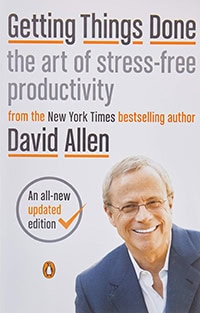
Well, I think I would write the question “What should I do today?” or “What’s important for me to consider today?”. Or it could be the question – whichever you feel most comfortable with – “What should I get done today?” And “What should I make sure to do today?” Any variation based on those themes or based on personal preference, what resonates with you. They should all get you to the place of a question that is very relevant and important and then when you maybe answer that question in the traditional way using software, maybe typing your answer, and you attempt to activate the right brain, what is going to be necessary is going to be following the protocol which is taking a breath, clearing your head, maybe closing your eyes – it is all detailed very in-depth in the book, of course, Thought Revolution, about just letting go and allowing for the possibility that you can in fact access the neural pathway to the right hemisphere, look at that question, and allow an answer to flow forth.
For some people, hearing it is better, some people have a harder time after reading it, and then trying to process it themselves and you know you have to suspend disbelief enough to allow that state of flow for an answer to flow forth. People sometimes think that the answer is going to happen instantaneously, which it may. Or it may take 5 seconds to 60 seconds for an answer to flow forth. Sometimes people sit there with a pen in the hand and 10 seconds have gone by, 30 seconds have gone by, what’s wrong? Well, it is a different thinking process, so it may take longer. It may not happen instantaneously. That’s all part of the experience and part of what we have to learn how our own brain works and how that process is going to occur. Nevertheless, when we start to get over that hump and see that it can, in fact, be very valuable based on the answers we get.
Absolutely. You mention a 3- to 5-year planning process. How would something like that work, would it be like a daylong session or sitting down or an hour by yourself? Would it be in a group of people? Would you spend as much time with your left-hand writing or your right hand? How would that process work?
Well, I think that’s based more on the individual. Certainly, take themselves through a process. There are a number – there are 7 case studies in the updated version of the book that Simon and Schuster published in the fall of last year. So that is – there’s a lot of great evidence and questions in there for the sole business owner, and a great kind of walk yourself through it kind of stepping stone approach to how to do it. If it’s a corporate concern, and I guess the reason that I’m invited into these companies, that planning and strategic planning and ideation are really important things and they typically have tried a lot of other processes that have either worked or haven’t. A lot of times people are interested in trying to do something new or just trying to do something more effective. And they found that this process is one that can really help them because it is learned so quickly and basically in 20 minutes or so or less as an interactive process at that.
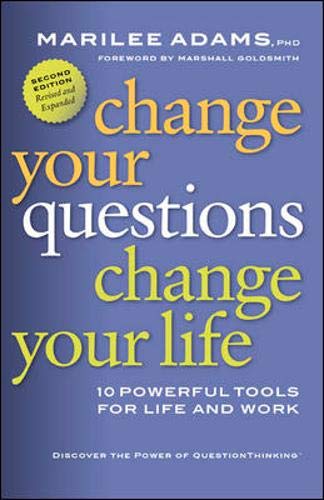
The questions can be about – that are particular to each company. How can we fix this division that’s been failing for the last – or sinking for the last 4 years? What’s the end game for the customers that we serve? What can we do to dramatically boost our profit? Or what haven’t we thought about that we could take our resources and go to market? How can we go to market in a way that is more appropriate for the type of company we’ve become and the products and services we now offer? You know, if we were starting the company from scratch, what would we do differently? It is these type of questions that are general but in the sessions that I do that we really try to understand what are the most important salient questions that they want answers to. Then boil those down and really go after those. I’m sort of agnostic when it comes to great ideas. Whether it is from the traditional left brain or the right brain or from a blend. My thought is always to let’s do what we can to come up with those big transformational ideas that can move the bottom line. We are not talking about 8% per year EPS increase. We are looking for something that might be 20% plus to the bottom line. Those are the really big ideas – that can potentially conceive a whole new division, a new possibility.
In the very first company I worked with, they solved the mystery unsolved for 15 years, which is why they were unsuccessful in selling eyewear at the upper end of the market. And they had operated for 30-40 years, and they tried to move into the upper end for 16 years unsuccessfully. So in a singular session – this story is in the book, by the way – in a singular session, they unlocked that mystery, figured out why, and had a 19% bottom-line increase in the recession of 2009. The big ideas, of course, are what are reshaping our economy. The Googles, the Facebooks, the Ubers, – people coming up with the game-changing ideas that allow for a better way of doing business. So that is really about trying to capture that genius that is there in one person’s brain or collectively, a combination of people’s left brains and right brains and interactivity and thinking through pieces and working together in teams and groups. At the end of a 3- or 4-hour session, they figure out what that is. That’s really the value for each team to figure out. “What can be the that big idea that is going to be transformative to the business?”
Well, it strikes me that the importance of asking the right question and formulating a high-quality question is critical to this process because if you ask a low-quality question to the left side of the brain, the right side of the brain, it doesn’t matter. You’ll get a lower quality answer. I remember learning about question-based thinking not long ago and reading a book called Change Your Questions, Change Your Life, and this whole process of question-based thinking. What is it Tony Robbins says? Ask a better question, you get a better answer.
Well said, I agree 100%, Stephan.
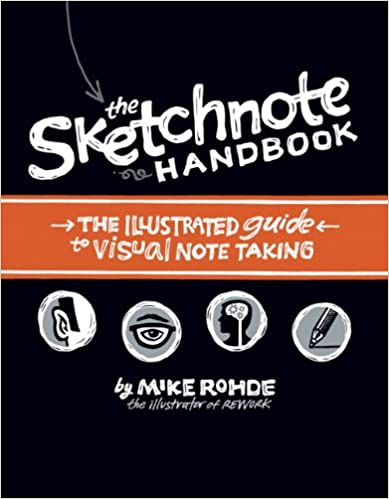
I’m curious if you’ve ever done any sketchnoting, because I recently had on my show Mike Rohde, who wrote The Sketchnote Handbook and The Sketchnote Workbook. The sketchnote process is very interesting – it unlocks creativity and so forth. He recommends sketchnoting in a journal every night and as well as when you are on trips, in business meetings, attending workshops, and so forth. How does this right brain writing and the sketchnoting kind of fit together? Or are they completely separate?
No, I think they are related because it is about that place of creativity and it is about how to best access that place, so just like drawing on the right side of the brain – my work is derivative of that, frankly. And so it’s – some people find in their examples. Actually in the book, where the individual problem solving or team problem solving where a team can take on a question and actually draw a picture of what the company will look like in 3 years and then contrast that with the right picture of what the company or product looks like in 3 years or 5 years. So there’s some opportunities to unlock some different possibilities by drawing that may not otherwise surface and curiously a lot of times people will draw something inspired by the right brain delivered through the non-dominant hand on the page. And then they’ll look at it and think and reason in a logical way. And they’ll say “I guess this is what this means”. Then I’ll go in and coach them and I’ll say “No, let’s not assume that necessarily. Let’s go back into the right brain and ask the question ‘What does this represent?’” And then they’ll find when they answer it with the right brain and answer it with the non-dominant hand, lo and behold they’ll find that it represents something different than what they thought it represented. It is almost like they had to go back to the same part of the brain that drew it to also interpret what it means, exactly.
A lot of times, people will draw something, inspired by the right brain delivered through the non-dominant hand on the page. Share on XWow, that’s a great idea. So you mentioned the book Drawing on the Right Side of the Brain. That’s by Betty Edwards, right?
Correct.
If there were a few, let’s say three or four books that were instrumental for someone to unlock their creativity – of course one of the books would be yours, and Drawing on the Right Side of the Brain might be another one. What would be a couple of other books that would be really important to have on your bookshelf?
Candidly, a lot of what I’ve read is theoretical. Like there is a great book by one of the students of Dr. Roger Sperry, Of Two Minds, which explains the theory of how all this works. I find that there’s a lot of books that are interesting but they are mainly theoretical and in my experience, it is true for me, that is why I wrote the one that I did, I wanted a workbook, roll-up-your-sleeves – you know mine has 55 questions in there, which is really a how-to because most people don’t have the time to go off and read all these things. They really want to get right to it and do things that will make an immediate impact. That’s really what motivated me.
If people have deep challenges in their personal lives they haven’t figured out, I recommend Dr. Lucia Cappacchione’s Recovery of Your Inner Child. That’s going to be a pretty tough read and not for the average person. I would also read Brian Mattimore’s Idea Stormers. Brian has 40 ways probably in there to be more creative, interesting techniques and things like color games and warm-ups based on the situation and exercises that I think are good. So I think everybody kind of has to find what resonates with them. In my 35 years in business, this is the simplest, the easiest, and the fastest for me. It has kind of been my go-to because it just works so well. I think everybody is a little bit different, people will have different preferences, certainly.
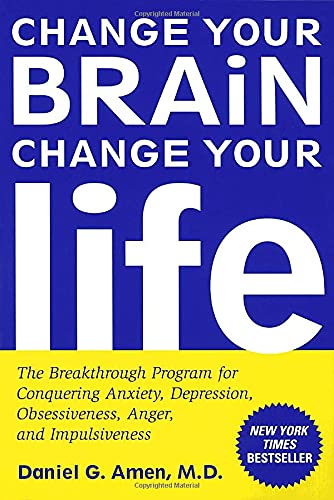
Right, right. And there’s the book Change Your Brain, Change Your Life by Dr. Amen. Have you had any experience with Dr. Amen?
I haven’t, I know his name and I’ve seen the title, but I have not.
Oh okay. Journaling. Do you normally write your thoughts of the day down before you go to sleep? Do you journal in the morning like your dreams you can remember from the night before? And if you are doing those, you’re doing it with your non-dominant hand or what?
Both, and I don’t rigidly hold to a schedule. I used to because I’ve been journaling I guess since I was 24 years old, so for over 25-30 years. And it used to take the form of more of a diary journal what I was kind of doing every day, thinking about it. But now I find that I’m journaling more about what matters to me, maybe daily or several days may go by where I’m not thinking about anything that is super super important, so it really sort of varies. But when I have something, I really want to consider if it is a day where I want to get a lot done and I need that to-do list to make sure I’m getting it done. Or a big client project where I need to be really organized and together and thoughtful because it is more about quality than quantity because I’m certainly using and activating the right brain to make sure I’m not missing something.
If I’m writing an article or a blog piece, I’ll typically write it conventionally and go back and say “What did I miss?” and pose that question to my right brain and invariably I’ll pick up one-two-three ideas I just didn’t think about even though I may have spent hours writing the piece and another hour editing it. And so I always before I press the submit button, I put that through the lens to make sure my right brain – the piece is as good as it can be. So it is – I view it as sort of a doubling down and intensifying the possibilities. It is exponential. It is not just times two. I really think of it as an exponentially better change or form of magnitude that I think often times the results are really inspired and it is something a much bigger, better, brighter idea than I would have otherwise had. On things that really matter, I always invoke generally after I’ve journaled and thought about it, I’ll always say “Well, what did I miss?” or “Is there anything more to this?” or “Is there something I haven’t thought of yet?” and almost every time there indeed is another possibility that oftentimes is a great insight that I would have otherwise missed.
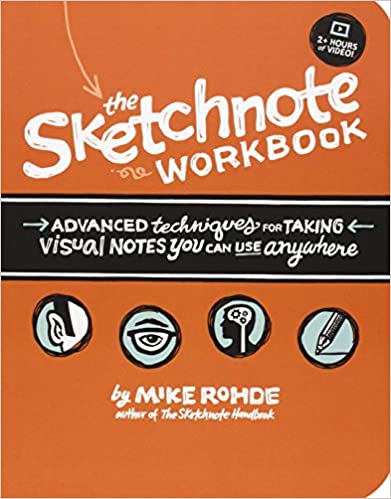
I love that. That is such a great question, “What did I miss?” I can imagine asking my right brain that very question working on any number of different things. Whether I’m writing a Huffington Post article, whether I’m writing my to-do list for the day, whether I’m planning out my week or my month. Or writing a letter to a loved one. What a powerful question. Any thoughts on how to get into a flow state. There’s that book on flow by Mihaly Csikszentmihalyi. There are some tips and triggers to help get you into a flow state. I imagine that activating the right brain, getting answers to questions, and doing problem-solving from your right brain while you are in a flow state by triggering one of these flow triggers would get you exponential returns, I imagine.
Yes, I was a big advocate prior to learning this methodology I learned in college of how to meditate and practice transcendental meditation and that has been helpful because I think especially in the world we live in today which every 10 seconds we are being bombarded by our devices and we’re being alert to some kind of message that is happening somewhere in our network – we are being overly stimulated in most cases. I think meditation is a great way to drop out for 20 minutes and just allow our minds to go wherever they are going to go and be okay with that. I also think that yoga is another great way to on a physiological basis gets our blood literally flowing from one side to the other, front to back.
I have a lower back problem, so I started yoga primarily to help with that, and the side benefit I think has been that it has just allowed me to relax more, sleep better, feel better, eat healthier, all those things are kind of related once you get into that healthy state. I think that this world we’re in, we live in a conceptual age, so it is really about the quality of the ideas we have. And find those, rather than just trying to get a number of things done. It’s finding that in fact, “How can we, in fact, come up with those breakthrough ideas? How can we be more intentional and thoughtful about the type of life we want to live, and then figure out how to live it?” Because it can be a really chaotic existence if we are just racing around, trying to get a big to-do list done. So it’s – I think there’s a better way to live and a more intentional, authentic way to live and it’s about figuring out who we are and who we want to be and trying to be that person.
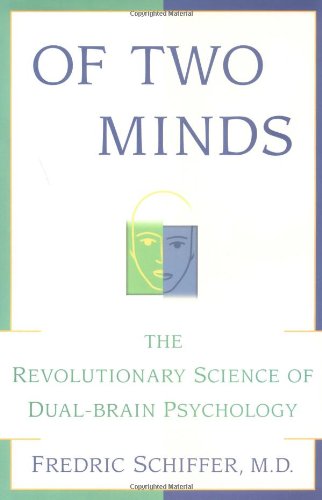
I love that, that’s great. You mentioned sleep. I’m curious, have you ever asked your right brain “What can I do to get a better night’s sleep? What sort of rituals or tools can I employ to get a better night’s sleep?”
I haven’t, but I will after this call. I think it is a great question. I actually am blessed in that I do really sleep really well now. I think the combination of yoga and I do work out with a personal trainer a couple of days a week so that combination of both pushing iron as well as the state of flow that comes from yoga. And I do hot yoga, so the sweating and the cardio that goes in that 90 minutes. 3 days a week. Then 2 days a week of pumping iron. I sleep like a baby. I think mostly because of that. I think that meditation also helps me sleep better because in the process of meditating I think I’m eliminating some of the noise and stress that comes on an average day. That is a sort of process in the meditation. And the research shows this from people who meditate.
It’s a much deeper level of sleep that you get. But some people also achieve that REM state in their meditation that they do in the deepest levels of sleep so I think all that is somewhat related. Next time you have a dream, interpret that dream by asking that question, “What did that dream mean?”, and put it through your right brain and just by simply saying “What did that dream mean?” and allow yourself to answer that activating the neural pathway to the right brain. I think you’ll be surprised that oftentimes they are very different answers than anything we might have otherwise thought traditionally. They just end up being very different. Because dreams, as we know, are often about symbolism but we oftentimes think too literally with our traditional left-brain kind of analysis so it ends up being something that’s different from that.
And do you do muscle testing? Are you familiar with that?
I am, I have done that in the past, although not lately. I think it is interesting. I also would add Stephan one really low tech solution – stop looking at devices at least 2 hours before bed. Research shows that the glow of the device, the screen, that light that is emitted from the laptop or desktop is so bright that it is approximating daylight. It is making it more difficult for us to close that laptop and attempt to fall asleep shortly thereafter.
Yep, that’s a great tip. In fact, I use an app on my computer called F.lux. That removes the blue light from the laptop screen. So if I do have to work late, I’m not destroying the melatonin because it doesn’t take long to get exposure to blue light, then you’ve got hours of lost melatonin that blue-light blocking glasses, which you can get for as little as $10 off of Amazon. If you have lots of blue light in the home, it is not just the laptop screen, it is everything, all the devices that are lighting up your house, wearing those glasses – which make you look pretty nerdy, I have to admit – that is very helpful in not destroying the melatonin before you go to bed.
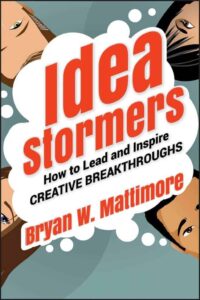
Great!
Yeah, so a couple of quick questions here that I want to ask before we close off this episode. Any thoughts on smart drugs?
Define that term?
Well, there’s drugs like Modafinil that help with, kind of like the Limitless drug, if you saw Limitless. It helps you have clearer, more powerful thinking. There is also Excelerol, which I interviewed the founder and inventor of Excelerol, he also invented as a teenager Herbal Ecstasy, Cheyenne, and talked about smart drugs on that episode. So I’m curious, any thoughts on smart drugs?
No, other than I try to take multivitamins and vitamin C, and I’m a big fan of ginger. Other than that, I try to eat organically. I think the food we consume is the fuel obviously. So I think trying to make sure the fuel quality is as high as possible is good.
For sure, you are what you eat. With smart drugs, I have to ask about ayahuasca. Because that supposedly can help get you into – help access your higher consciousness and have profound experiences. I haven’t tried it myself, but I’m curious. Your thoughts?
I haven’t tried it, so I can’t actively comment.
Okay, last question here. You mentioned earlier in the episode that the right brain can help you get to your higher consciousness. Any other exercises or processes that you would recommend for people to access their higher consciousness besides the right brainwriting?
I think retreats, really good, guided by professionals in beautiful places at Big Sur, Sedona, and Santa Fe, silent meditative retreats are really interesting. I think we’ve got to find ways to bust out of the familiar comfort zone that we’re in.

So you’ve done silence meditation for how many days?
Just two days. I think retreats, in general, are really important to just unplug and refocus and get out of that everyday kind of place because we tend to think that vacations do that, and they can, but vacations sometimes are just different types of stimuli and lots of drinking and partying and alcohol and all that, which might be also involved. Which is fine, but it is not really getting us into that thoughtful, reflective place.
Well, Bill this has been just an awesome episode. Thank you so much for joining us. If somebody wanted to reach out to you, let’s say they are a Fortune 500 company and they want to hire you and get your amazing services, how would they reach you? What is your website?
Website is williamdonius.com, I also have a very active Linkedin page under William ‘Bill’ Donius and either way, they’ll find me.
Perfect. Thank you so much. For our listeners, that was Bill Donius and again, be sure to check out his TEDx talk, he goes into some more detail about the right brain writing and picking your animal and accessing the right brain to do that. Also, I encourage you to download the transcript for this episode on Get Yourself Optimized’s website, which is getyourselfoptimized.com. If you could also write a review on iTunes, that would be really helpful, because that is the engine that powers our iTunes rankings and helps keep us in the New & Noteworthy. So please do that if you could. We’ll catch you on the next episode of Get Yourself Optimized, I’m your host Stephan Spencer, see ya next time!
**Bonus Content**
Should I get a pen and paper?
Yeah, let’s try it live. So this is good, this is something that would be in your prep for your next interview, I do this with clients and with pieces that I’m writing. You could say “what else should I have asked Bill?” You had great questions, by the way, I thought it was probably the most inclusive, in-depth, one of these interviews that I’ve done and I’ve done dozens since 2012 so good job on that.
Thank you.
So if you’ll allow me to coach you through it, with your dominant hand, is there anything now that comes to mind, having just spent the hour, and you had great questions but is there anything that comes to mind, anything else that you would be thinking now that you could ask or would have asked?
I could have asked you about the 40 years of Zen if that was something that you were familiar with, which accesses theta waves, and just the different brain wave patterns. Getting into Theta or Delta, I could have made conscious choices about which wave pattern you’re going to be in and not just let your brain do that, and on its own.
Or if you’d like, and that would be anything that you’d like, such as the seminal business question which might be “What could I do to improve my business?”
Cool, one thought that just came to mind is I am teaching, I’m co-running a 3-day seminar next May, that’s called Passions into Profits, and it’s about getting more alignment and what really juices you, and putting that into your daily practice and putting that into your career path and your businesses, instead of “well I have to make ends meet” and then on the side work on my purpose or my passion, as I can fit it in. So that’s a 3-day seminar that I’m doing with Kris Jones, he also sold his business, I sold mine to Covario, he sold his to eBay, we’re both Tony Robbins fans, keep bumping into each other at Tony Robbins’ events and at the Search Marketing conferences cause we’re both search marketers, SEOs, and we both thought let’s do a joint venture together, and we formed a separate company, we’re gonna do this 3-day event its gonna be in Irvine, California –no, Costa Mesa, and I’d be interested in possibly having you come out and speak there. We didn’t really plan on bringing in a lot of speakers, primarily to just be the two of use, but you got some really cool specialized knowledge and some great exercises that I think the attendees would really benefit from. So if that’s of interest to you, I’ll talk to my business partner about you, I’ll share this recording once its all edited, with him, and I’ll tell you the dates for that, its middle of May, the 13th, 14th, and 15th of May.
Yeah I find that one of my favorite questions to ask when I’m working with someone is oftentimes will do, kind of on a one-off basis, I’m not really trying to do personal coaching but sometimes I’ll work with high-level executives whose companies I’m already doing work with and in, and one of my favorite questions to ask is – that weekend is currently open – what I’ll ask them to do is respond to the question “what is my highest and best purpose in life?” And I find that oftentimes they have a different answer to that question and from their right brain, and its often one that makes them cry because they tap into something that was buried deep and they just weren’t really thinking about it or understanding it and may have thought it sounded too trite and once they think it and they write it down, and they start to think about it, and they start to flush out what that means and what that looks like, it’s tremendously energizing because it’s not what I think, or you think, or your partner thinks, is their purpose, it’s coming from within and it coming from that presumably high, place of higher consciousness so they immediately recognize it as being important and profound, it’s a really cool thing so that could be a cool segment of the weekend. Discovering that purpose, and I’m sure there’s going to be a lot of other cool stuff planned about passion and examples, learning from one another and all kinds of cool stuff, but I think it would fit in wonderfully into that process.
Absolutely, that’d be amazing. Well, I’m excited to share this with my business partner Kris and I think he’ll be excited to have you onboard as well. I’ll get back to you on that, it’ll be next week when I’ll let you know.
Great, this was terrific, I was looking forward to it cause I have a lot of respect for what you’re up to and what you were doing and I could tell that you were doing some really cool stuff and I was disappointed we couldn’t get a chance to chat more there but we’ve made up for it now.
Yeah and let’s keep in touch too, not let this be a one-off
Yeah, absolutely, for sure!
Important Links
Connect with William Donius
Tools
People
Organization/Companies
Books
Previous Get Yourself Optimzed Episodes
Video

